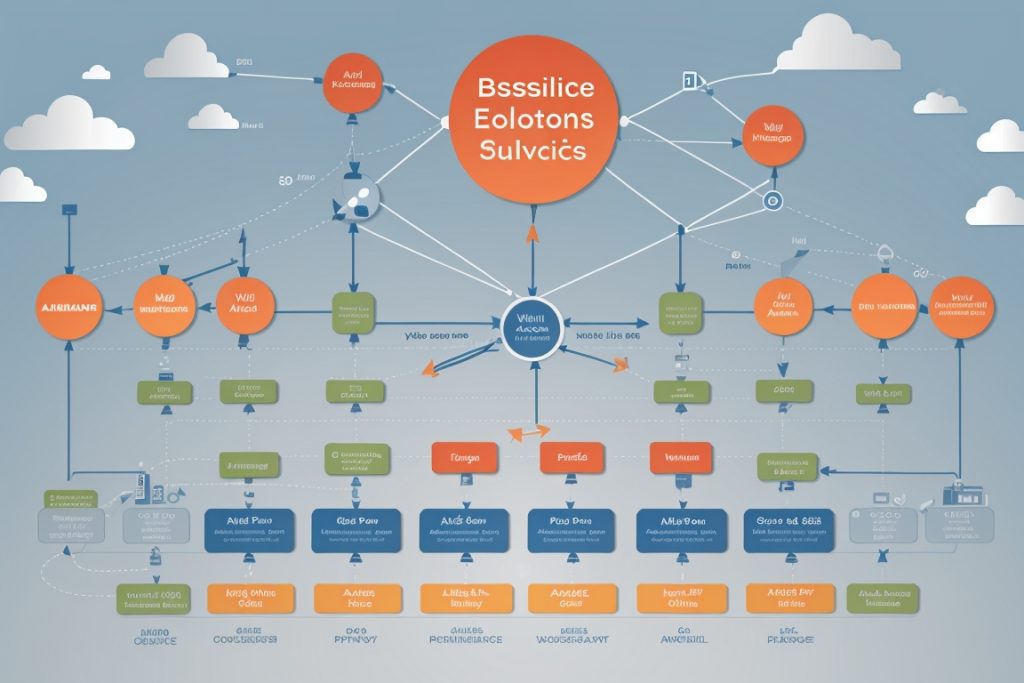Introduction
In today’s digital landscape, the demand for highly available, scalable, and responsive applications is ever-increasing. Load balancing plays a crucial role in achieving these goals. Load Balancing as a Service (LBaaS) is a technology that empowers organizations to distribute incoming network traffic efficiently across multiple servers or resources. In this article, we will explore LBaaS, its significance, how it works, and its benefits in modern application deployment.

Understanding Load Balancing
Load balancing is a networking technique designed to distribute network traffic evenly across multiple servers or resources to ensure optimal utilization, minimize downtime, and enhance application performance. It acts as a traffic cop, directing incoming requests to the most available and responsive resources, thereby preventing server overload and ensuring high availability.
Load Balancing as a Service (LBaaS)
LBaaS is a cloud computing service that provides load balancing functionality to applications and services hosted in cloud environments. It abstracts the complexity of load balancing and offers a simplified, scalable, and cost-effective solution for managing traffic across multiple instances or containers. LBaaS can be deployed as part of Infrastructure as a Service (IaaS) or Platform as a Service (PaaS) offerings.
How LBaaS Works
LBaaS operates through a set of key components:
- Load Balancer: The central component responsible for distributing incoming traffic across a pool of backend servers or resources. It acts as the entry point for client requests.
- Backend Servers or Resources: The servers or resources that host the application or service. These servers may be virtual machines, containers, or physical servers.
- Health Checks: LBaaS regularly checks the health of backend servers to ensure they are responsive and operational. Unhealthy servers are temporarily removed from the pool.
- Load Balancing Algorithms: LBaaS employs various algorithms to determine how to distribute traffic among backend servers. Common algorithms include Round Robin, Least Connections, and IP Hash.
- Scalability: LBaaS can scale horizontally by adding more backend servers to the pool to accommodate increased traffic or demand.
Benefits of LBaaS
- High Availability: LBaaS ensures that applications remain available even if some backend servers fail. It routes traffic away from unhealthy servers to healthy ones.
- Improved Performance: Load balancing distributes traffic efficiently, reducing response times and preventing server overload.
- Scalability: LBaaS can easily scale with your application, accommodating traffic growth without manual intervention.
- Failover: LBaaS supports automatic failover, ensuring continuous service even when individual components fail.
- Cost-Effective: LBaaS reduces the need for manual load balancing configuration and maintenance, saving time and resources.
Use Cases for LBaaS
LBaaS is valuable in various scenarios:
- Web Applications: LBaaS ensures high availability and responsive web applications, particularly during traffic spikes.
- API Gateway: LBaaS can manage incoming requests to API services, distributing them efficiently across backend servers.
- Microservices: In microservices architectures, LBaaS helps route traffic to different microservices based on their availability and performance.
- E-commerce: Online stores use LBaaS to handle traffic during peak shopping seasons, ensuring seamless shopping experiences.
- Media Streaming: LBaaS is essential for delivering multimedia content to users, maintaining a stable connection even during high-demand events.
Conclusion
Load Balancing as a Service (LBaaS) is a crucial component in modern application deployment and cloud computing. It ensures high availability, scalability, and improved performance by efficiently distributing network traffic across multiple backend servers or resources. Whether you’re running web applications, APIs, microservices, or media streaming services, LBaaS plays a vital role in delivering a seamless and responsive user experience. As organizations increasingly rely on cloud-based solutions, LBaaS remains a valuable tool for optimizing and enhancing application delivery.
